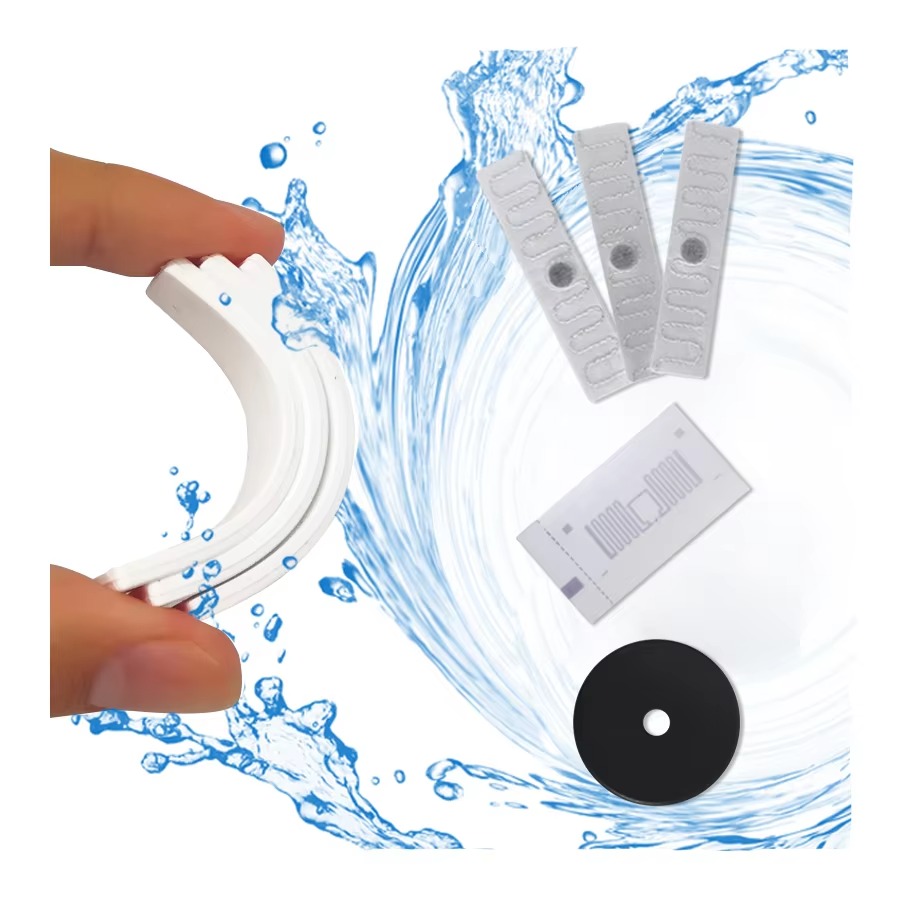
RFID Tags: Detailed Explanation and Practical Applications
RFID tags (Radio Frequency Identification tags) are electronic labels that use radio waves for data transmission and storage.
RFID tags (Radio Frequency Identification tags) are electronic labels that use radio waves for data transmission and storage. They are one of the core components of RFID technology and enable quick reading of information on the tags without physical contact. RFID tags play a significant role in asset, inventory, and personnel management across multiple fields. Below is a detailed explanation of RFID tags, their main types, and practical applications.
RFID tag consists of a tiny chip and an antenna used for data storage and receiving/sending radio signals. When an RFID reader emits a radio frequency signal, the tag receives the signal and returns data through the antenna. The reader then sends the received data to the backend system for processing. This wireless communication method allows for the rapid identification and reading of information on the tag.
Passive RFID Tags: Passive tags do not have a built-in power source; they rely on the radio frequency signals emitted by the reader to generate an electromagnetic field, which activates the chip. These tags are cost-effective and suitable for large-scale deployments.
Active RFID Tags: Active tags contain a built-in battery and can actively transmit signals. These tags have a longer reading range and higher data storage capacity, making them suitable for applications that require long-distance and high-performance capabilities.
Semi-active RFID Tags: Semi-active tags are activated by the reader and use an internal battery to assist the chip’s operation. They offer a combination of the advantages provided by both passive and active tags.
Special Material RFID Tags: RFID tags can be made from various materials according to the specific application requirements, such as high-temperature resistance, corrosion resistance, and waterproof qualities, to adapt to diverse environments.
Asset Management: RFID tags can be attached to equipment, tools, vehicles, and other assets for real-time tracking and management, facilitating inventory checks and maintenance.
Inventory Management: In warehousing and supply chain fields, RFID tags are used to track goods and raw materials inventory, improving inventory management efficiency and reducing human error.
Retail Industry: RFID tags can be affixed to products, helping retail businesses quickly identify product information, speeding up checkout efficiency, and updating inventory in real-time.
Healthcare: RFID tags can be used to track patients, equipment, and medications, improving efficiency and safety in hospital management.
Transportation and Logistics: RFID tags are used for vehicle identification, luggage tracking, and more, enhancing efficiency and service quality in the transportation and logistics sectors.
Personnel Management: RFID tags can be used for personnel identification and attendance management, improving human resource management efficiency for enterprises and institutions.
Fast Recognition: RFID tags can quickly read and transmit data, enhancing work efficiency.
Non-contact Reading: Data can be read without direct contact with the tag, making it convenient and quick.
High Storage Capacity: RFID tags can store extensive data, such as product information and historical records.
Customizable Design: Tags can be customized according to requirements, including size, shape, and material.
Data Security: Tag data can be encrypted and authenticated to ensure data security.
As an essential part of RFID technology, RFID tags play a crucial role in asset management, inventory management, and personnel management across various fields. By working in conjunction with readers and backend systems, RFID tags facilitate the swift and accurate identification and tracking of items, enabling efficient data transmission and management. With the continuous evolution of technology, the practical applications of RFID tags are expected to expand into more areas, providing smarter and more efficient management experiences across industries.
Newest trends and common knowledge in RFID laundry tags.

RFID tags (Radio Frequency Identification tags) are electronic labels that use radio waves for data transmission and storage.

How RFID Technology Empowers Linen Management
An RFID laundry tag, composed of a chip and antenna, communicates with readers via wireless signals to deliver unmatched automation and accuracy.

RFID Washable Laundry Tags—durable, customizable, for seamless textile tracking in harsh laundry environments, ensuring efficient inventory management.
Didn’t find what you want? Ask our manager for help!